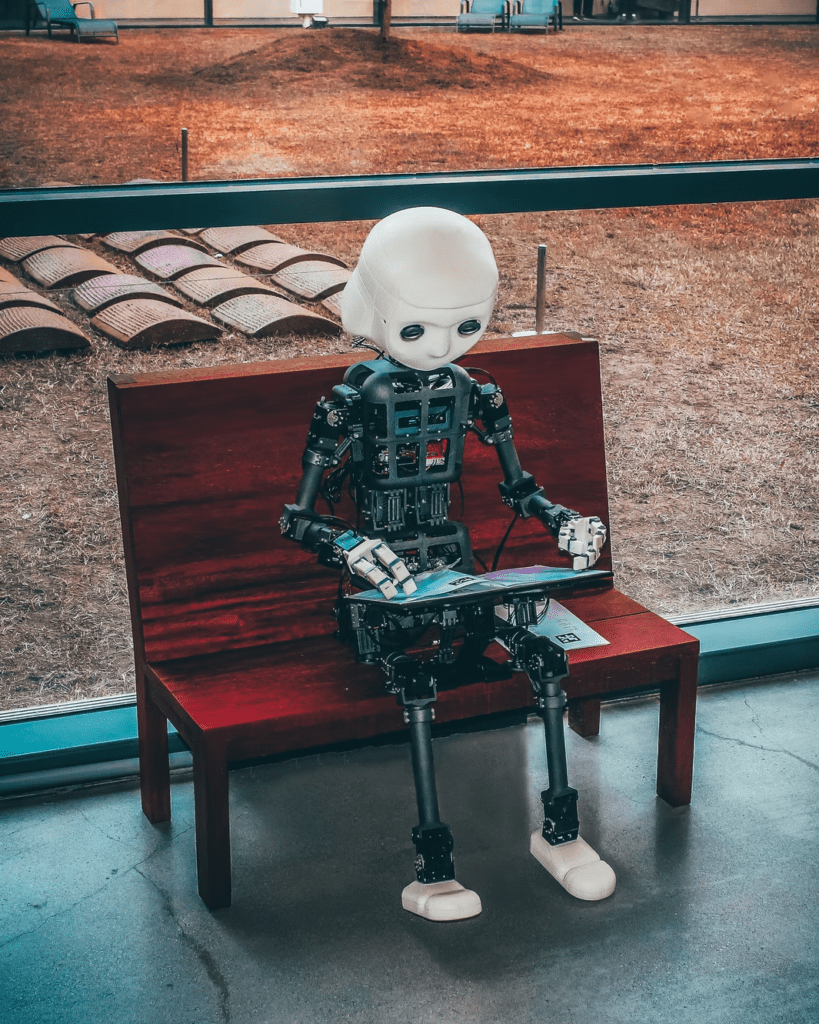Artificial intelligence is a broad concept. It encompasses any technology that replicates human thinking and skills. Such as understanding complex information, and concluding on one’s own. Also, the ability to engage in meaningful and coherent dialogue.
Machine learning is a subspecies of artificial intelligence. It is a process in which software learns on the same principle as humans. During such training, the program analyzes significant layers of data. Then searches for patterns to classify information. Furthermore, it creates forecasts. The cyclical nature of this algorithm allows the program to learn. It can change its intentions depending on previous findings.
Artificial intelligence and learning

Artificial intelligence is a major influence on the state of education today, and the consequences are enormous. AI has the potential to transform the functioning of the education system. It can increase the competitiveness of institutions and empower teachers and students at all levels.
The potential of AI can change the way teachers are taught. It can help to maximize student achievement and prepare them for the future. Collective intelligence tools will be available to save teachers’ time with paper tasks. So that teachers and professionals can spend more time with students.
Artificial intelligence in standardized testing in education
The input data contains certain biases. That is, poor results, such as low scores, can be demotivating for student learning. Bad past results do so that future results will also be bad. Therefore, the use of artificial intelligence may not be entirely fair. Because the input data may be biased and therefore the results will be biased.
Of course, artificial intelligence simplifies the work for teachers, but it cannot be relied on completely. And if you still think that AI is perfect for testing, you should research paper and find standardized testing essays to read. Such samples of essays are free. And while reading samples of standardized testing essays, you’ll learn useful information about AI.
Experts say that bias in testing through artificial intelligence will always exist. Therefore, this shortcoming cannot be eliminated. But instead, you can change the types of bias. Then ensure that it does not affect students. It includes race, ethnicity, income, or something else.
How to take advantage of artificial intelligence to improve testing?
First, there must be an investment in research so that experts can better understand exactly how and where bias in testing occurs. After all, the test results must be fair and accurate. They must fully reflect what students know. Secondly, it is also worth investing in the development of new types of technological assessments. Tools such as educational games and virtual reality must be developed.
And third, it is worth investing in the professional development of teachers to effectively use grades. After all, teachers must be experts in creating assessments as well as in using the results to support student learning. Countries such as Finland and Australia are investing heavily in supporting teachers. So, they can be role models.
Individual training
Artificial intelligence allows you to focus on the individual needs of the student. These days you can create individual instructions, tests, and reviews. As a result, students work with ready-made material and fill in the gaps in their knowledge. It is possible to scan and analyze students’ facial expressions. If the material is too complex, the platform can change the lesson depending on their needs.
Voice assistants
Voice assistants allow you to interact with learning materials without a teacher ( Amazon Alexa, Apple Siri, and Google Home). As a result, you can use the learning platform anywhere, anytime. For example, Arizona State University uses Alexa for routine campus needs. The assistant can answer frequently asked questions or follow a student’s schedule. In addition, using such assistants is quite interesting and exciting for students.
Smart content
Smart content means a variety of learning materials. From digitized textbooks to customized interfaces.
Global learning
AI offers many opportunities to share knowledge around the world. Using artificial intelligence solutions, students can study a variety of courses and curricula. There are many platforms with interactive learning materials from the best tutors.
AI also provides opportunities for students who speak different languages or have vision or hearing problems. For example, Presentation Translator is an AI-based solution that creates subtitles in real-time. Using AI language recognition, students can hear or read in their native language.
Conclusion
The use of artificial intelligence in schools in different countries is in the early stages. However, there are already concerns about the confidentiality of personal data. Some believe that modern technology will facilitate the rapid acquisition of information. Others argue that children are not ready for such experiments and do not accept such innovations. But we won’t be able to ignore or avoid all the opportunities, achievements, and failures that come with AI.


